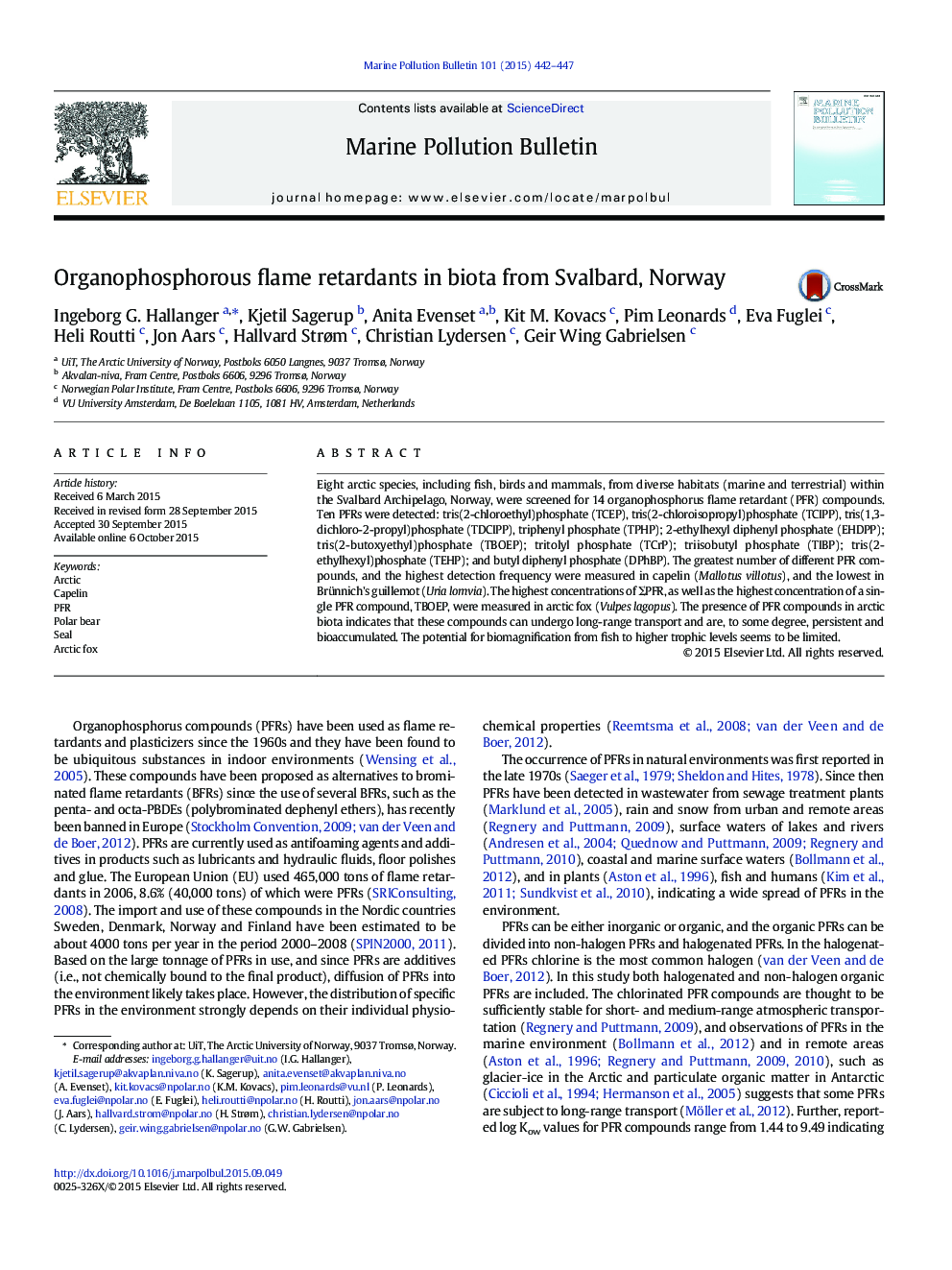| Article ID | Journal | Published Year | Pages | File Type |
|---|---|---|---|---|
| 4476634 | Marine Pollution Bulletin | 2015 | 6 Pages |
•Ten PFR compounds were detected within eight Arctic species from the marine and terrestrial ecosystems of Svalbard, Norway.•Highest number of PFR compounds were found in fish.•The potential for biomagnification above fish seems to be limited.
Eight arctic species, including fish, birds and mammals, from diverse habitats (marine and terrestrial) within the Svalbard Archipelago, Norway, were screened for 14 organophosphorus flame retardant (PFR) compounds. Ten PFRs were detected: tris(2-chloroethyl)phosphate (TCEP), tris(2-chloroisopropyl)phosphate (TCIPP), tris(1,3-dichloro-2-propyl)phosphate (TDCIPP), triphenyl phosphate (TPHP); 2-ethylhexyl diphenyl phosphate (EHDPP); tris(2-butoxyethyl)phosphate (TBOEP); tritolyl phosphate (TCrP); triisobutyl phosphate (TIBP); tris(2-ethylhexyl)phosphate (TEHP); and butyl diphenyl phosphate (DPhBP). The greatest number of different PFR compounds, and the highest detection frequency were measured in capelin (Mallotus villotus), and the lowest in Brünnich's guillemot (Uria lomvia). The highest concentrations of ΣPFR, as well as the highest concentration of a single PFR compound, TBOEP, were measured in arctic fox (Vulpes lagopus). The presence of PFR compounds in arctic biota indicates that these compounds can undergo long-range transport and are, to some degree, persistent and bioaccumulated. The potential for biomagnification from fish to higher trophic levels seems to be limited.
